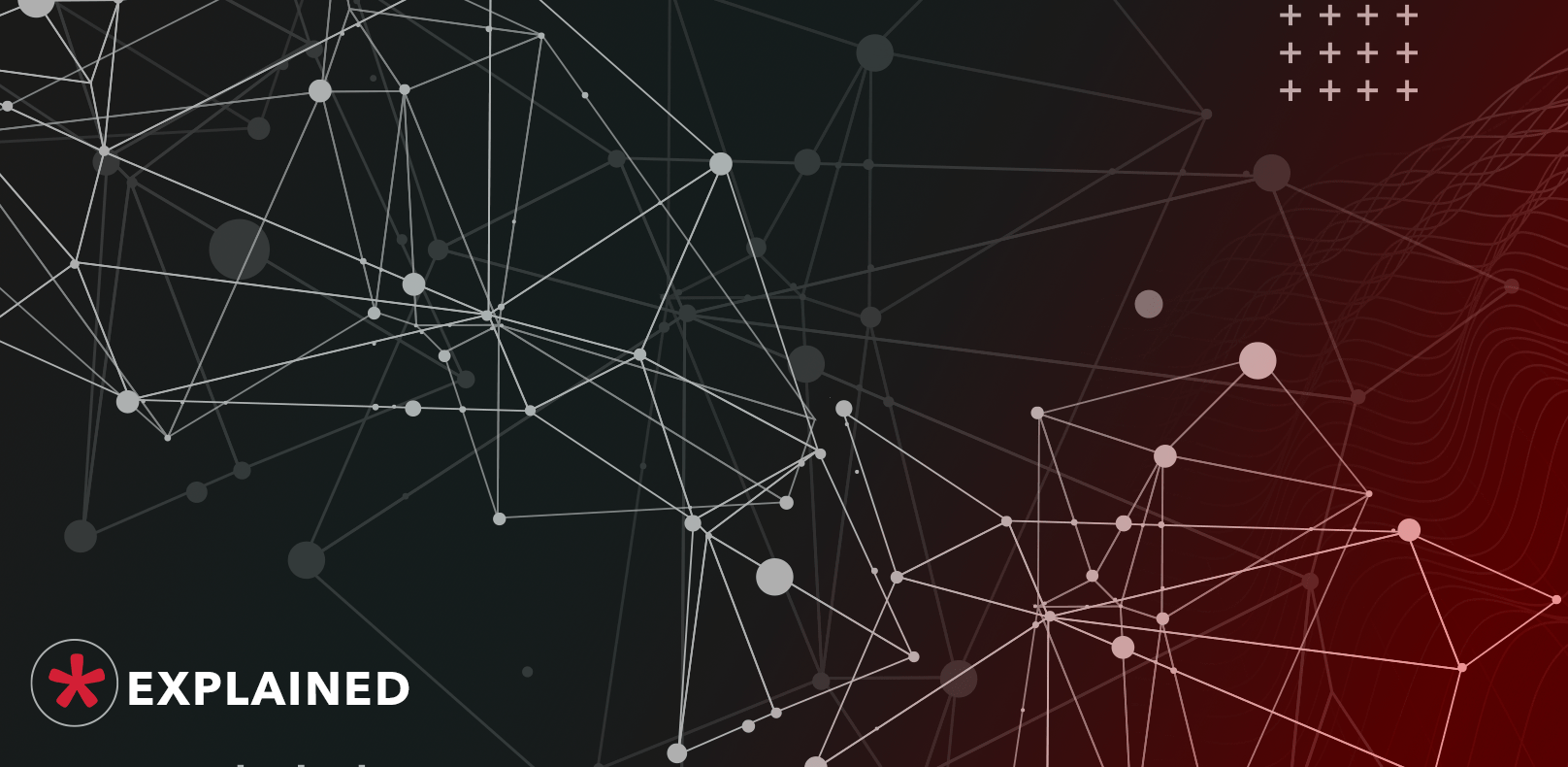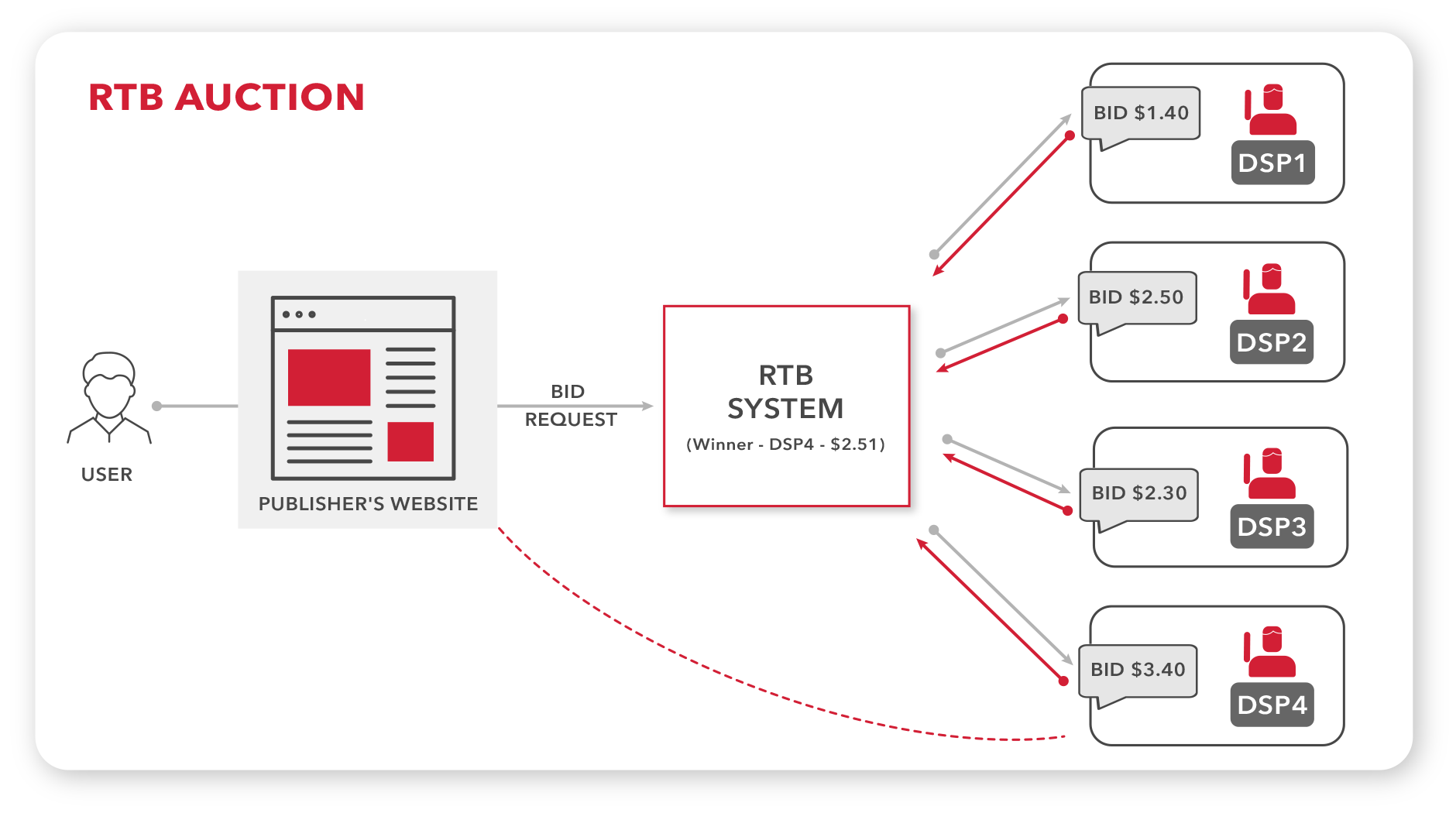
Ad Serving 101: Where Advertisers Meet Publishers
Ad serving is a combination of technology and services that place ads on the website, mobile app, CTV or any other digital platform. It includes the range of functions from delivering ads and targeting users to ad performance reporting and optimizing campaigns based on the results. Previously, we described the key components of the programmatic ecosystem.
To choose the most effective way of monetizing the inventory or buying audiences at scale, it is vital to understand which adtech solutions will better fit your business model and goals.
The appropriate solution for publishers depends on the size, traffic volume, integrations and partnerships. Large-scale publishers need a comprehensive solution to manage various segments of their ad inventory and audiences, while small publishers are better off with a more basic solution. Similarly, there are distinct ad serving models for a single advertiser, and for the agency that represents multiple brands.
For this reason, we are going to explore various connections between publishers and advertisers and break down SaaS products and technical solutions that can accommodate them.
- Technical ad serving solutions
- Ad tags
- How do ad tags work?
- Video advertising ad tags (VAST and VPAID)
- VAST
- VPAID
- Audio advertising ad tags (DAAST)
- OpenRTB
- Header bidding
- Hybrid model
- Ad SDK for in-app advertising
- How publishers and advertisers connect to the programmatic ecosystem with Admixer
- Small and medium-sized publishers
- Large-scale publishers, ad networks, and media houses
- Ad agencies and media buyers
- Large-scale agencies
- To sum up
Technical ad serving solutions
Ad tags
An ad tag is a piece of code inserted into the publisher’s website to display ads. It consists of a string of HTML or JavaScript that explains how the ad should look like. An ad tag designates the spot for the ad, defines the size, format, and other specifications for the given ad space.
Ad tags are used both for programmatic media buying and direct ad serving.
How do ad tags work?

- An initial ad tag is generated by the ad server. It’s installed on the web page to deliver ad requests to adserver.
- When a user lands on a website, the browser sends the ad tag with information about the user and ad placement to the ad server.
- The ad server may forward the request to DMP to get more information about the user and show the right ad.
- The ad server checks if the request matches with current ad campaigns or gets bids from external DSPs if connected.
- Adserver defines the most appropriate ad to be shown (decision made by auction or priority model)
- Finally, the ad server returns the creative to be served to the user.
This is a simplified process of ad serving that usually happens in direct media buying. Yet, publishers can also add the partner supply-side platform (SSP) in the interface of the primary ad server to sell remnant traffic and connect additional monetization sources.
SSP adds the publisher’s ad space to the list of inventory available for sale. When a user visits the publisher’s website, the ad tag passes the ad request to the SSP, informing it about the user and his characteristics, to match it with the appropriate ad from the advertiser.
Video advertising ad tags (VAST and VPAID)
Ad tags used for video ad serving have to be more specific than the regular tags for banner ads. Just a few years ago, the advertiser who wanted to display a video ad, had to check if their video serving protocol was compatible with the publisher’s ad player. However, since then, the industry has moved toward standardization eliminating redundant work.
VAST
Interactive Advertising Bureau (IAB) has developed a unified protocol for video ads – Video ad-serving template (VAST). Now, ad tags for video-surfing have to comply with VAST. This industry-standard eliminated the cumbersome and time-consuming synchronization and enabled advertisers to serve video ads across a multitude of publishers’ sites.
VAST by itself supports only relatively simple in-stream video formats and doesn’t provide capabilities for interaction.
VPAID
For this reason, IAB introduced Video Player Ad Interface Definition (VPAID) – a common communication protocol between video players and ad units, enabling diverse interactive in-stream ad experience. This shared interface allows advertisers to have more control over their video campaigns. VPAID is turning obsolete because it is highly susceptible to fraud. The advertising market is gradually abandoning this protocol and searching for new industry standards.
Audio advertising ad tags (DAAST)
Audio advertising exists in various environments and previously faced issues with adopting programmatic due to the fragmented nature of this market. For this reason, IAB released Digital Audio Ad Serving Template (DAAST), an industry-standard for video ad serving. DAAST defined the principal guidelines for audio ad delivery, reporting, and attribution for major platforms and devices.
DAAST laid down the groundwork for scaling this ad format across various environments, by filling the gaps in the ad serving infrastructure. For instance, it addresses the needs of mobile audio apps and in-car radios where access to a web browser is limited, which complicates ad and play tracking functionality.
To adopt DAAST, publishers need to comply with its requirements, and support linear ads and optionally companion ads, ad pods, or skippable ads.
OpenRTB

OpenRTB is a method of sequentially selling the publishers’ inventory, requesting demand sources in turns. OpenRTB connects to the publisher’s website via SSP platforms through the system of endpoints. RTB endpoints are locations in the publisher network that connect it to the programmatic ecosystem. Publishers conduct a series of real-time auctions until all of their ad inventory is sold.
Publishers offer the inventory in series to the demand partners according to the yield from previous actions, or in a predefined order.
OpenRTB works via the second-price auction model. The winning bidder pays the price offered by the second-highest bidder plus $0.01.
Header bidding

Header bidding is a programmatic buying method that enables publishers to simultaneously collect multiple bids from a number of demand sources on all of their ad inventory prior to a sale. In header bidding instead of the separate auction for each demand partner, ad exchanges can bid at the same time in the wrapper on the web page. Header-bidding uses a more straightforward first-price auction model.
The prebid connection is implemented through a header wrapper, which is installed into the page code. It significantly speeds up the ad serving process.
A header wrapper is not a single tag, but rather a repository of tags. With the ordinary ad tag, you would have to alter the code each time you add a new demand partner, but not with the header wrapper. A header wrapper significantly simplifies the management of the demand partners for publishers. The technology organizes buyers and sets up timeout rules for the RTB auctions and collects multiple bid responses.
The open-source header wrapper technology was developed by Prebid.org, a nonprofit organization, creating adtech solutions. Based on the wrapper, Admixer created its own solution, which by default, has an adapter connecting it to HB demand from Admixer.SSP.
Each time a page loads, demand sources can bid on each impression on that page, even if some or all of the inventory has already been sold through direct deals between an advertiser and the publisher.
Hybrid model
There is also a hybrid model that merges features of header-bidding and OpenRTB to maximize yield from each impression. The server initiates the OpenRTB second-price auction and then conducts the Header Bidding first-price auction.
The winning bids compete in an additional auction that determines the best price offer. The hybrid model increases the chances of getting higher bids and amplifies monetization. To deploy hybrid model, publisher need to insert Admixer tag directly into their website
Ad SDK for in-app advertising
In-app ad spaces need a different type of connection. To connect a mobile application to an ad network, publishers need to implement an Ad SDK (Advertisement Software Development Kit). It is a software library that is incorporated into the app to enable ad networks to serve ads.
Additionally, instead of cookies, for in-app ads, advertisers employ user-resettable identifiers provided by the mobile device’s operating system, AdID for Android and IDFA for Apple.
Those IDs allow media buyers to match their user profiles with the impression received from the publisher.
Mobile advertising IDs work similarly to cookies and enable advertisers to measure the performance of their campaigns effectively, track user activity, and facilitate attribution, frequency capping, and re-marketing.
How publishers and advertisers connect to the programmatic ecosystem with Admixer
Publishers and advertisers can start trading traffic by connecting to the programmatic ecosystem. Depending on the type of business and its scale, they should use different technical solutions:
Small and medium-sized publishers
SaaS solution: ad server Admixer.Publisher
Connection via: ad tags (VAST/DAAST/JS) and header bidding
Buying method: waterfall or header bidding for sale of the inventory
Small publishers that want to start serving ads, but don’t need the functionality of the ad network need an ad server, for instance, Admixer.Publisher. It is a full-scale solution for impression monetization from direct ad sales and ad exchanges.
Admixer.Publisher has a free plan for small publishers. Want to give it a try?
Try for freeWith ad server, publishers connect to advertisers via ad tags and/or header wrapper and sell their inventory via water-falling or header bidding. They have to set up campaigns and upload creatives manually. Ad server provides limited options for trading inventory programmatically and automating ad placement and creatives adjustments.
Large-scale publishers, ad networks, and media houses
SaaS solution: Enterprise-level ad management solution Admixer.Network
Connection via:
- for connection with publishers: ad tags (JS and VAST tags) and header bidding;
- for demand integration: direct campaign creation by uploading creatives or adding external tags; connection to DSPs (own partner demand providers – DSPs/SSPs or/and Admixer.SSP) via OpenRTB protocol and header bidding.
Buying method: programmatic buying methods
Large-scale publishers, ad networks, and media houses need diverse options for selling and monetizing their inventory – more comprehensive capabilities of the Admixer.Network.
In this solution, network owners can set up self-service individual trade desks for advertisers or agencies to purchase inventory and manage their advertising campaigns. This way, advertisers get a self-service platform and don’t need to invoke the ad network owner each time they need to update creatives in their campaign.
The network can connect to DSPs via OpenRTB or header bidding and sell ad inventory via auction or through other programmatic buying methods.
A network owner can add additional modules to enhance their ad serving, for instance, DMP to gather and analyze first-party data, Creatives for building WOW-banners or video/audio player with built-in monetization.
You can create and manage your ad network with Admixer.Network solution. It connects all dots in the programmatic ecosystem. The structure may look like this:

Want to learn more about Admixer Network or request a demo?
Learn moreAd agencies and media buyers
SaaS solution: DSP trading desk Admixer.DSP
Buying method: direct deals and programmatic buying methods
Agencies and media buyers can use DSP to purchase inventory at scale and manage their ad campaigns. DSP allows brands to buy audiences from the diverse inventory of supply, measure, and optimize marketing campaigns in real-time.
For instance, brands can use Admixer.DSP, which has diverse functionality. It provides access to the global market of premium supply (large-scale direct publishers, ad exchanges, SSPs, and ad networks), numerous targeting options, reporting, and analytics.
Large-scale agencies
SaaS solution: Agency Tech Stack Admixer.ATS
Buying method: direct deals and programmatic buying methods
Admixer provides a special SaaS solution for global advertising agencies – ATS. An owner sets up trade desks in ATS for other agencies and partners, so they can access and buy ad placements on the platform. Basically, it is an ad network for the demand side, with an ability to connect modules with additional features.
On top of the DSP module, agencies can connect DMP for the advanced campaigns analytics, and integration of the 3rd party data,
With a Marketplace module, ATS can get access to the inventory of Admixer.SSP, or if they want external inventory – set up agreements with publishers and networks via direct deals. ATS can generate a string of code for the direct ad serving on the publisher’s website.
To sum up
You should carefully weigh out all the options and choose the SaaS solution that better fits your business model.
- If you are a niche publisher with specific audiences, you can just set up an ad server (Admixer.Publisher) and sell impressions directly to advertisers in your industry.
- If you are a large-scale publisher with a diverse audience, media house or ad network with multiple publishers, you need Admixer.Network to diversify your demand partners and maximize fill rate. With the solution, you can connect to ad exchanges to sell excessive inventory programmatically, set up a private marketplace, collect and monetize user data.
- If you are an agency, you may use Admixer.DSP to purchase ads from diverse sources, including premium Admixer.SSP inventory and manage your ad campaigns.
- If you’re a large-scale agency and need an effective solution to deliver inventory to your clients, as well as ensure reliable supply – Agency Tech Stack is the best option out there.







